MARIANI’SVirtual
Gourmet
September
8, 2013
NEWSLETTER
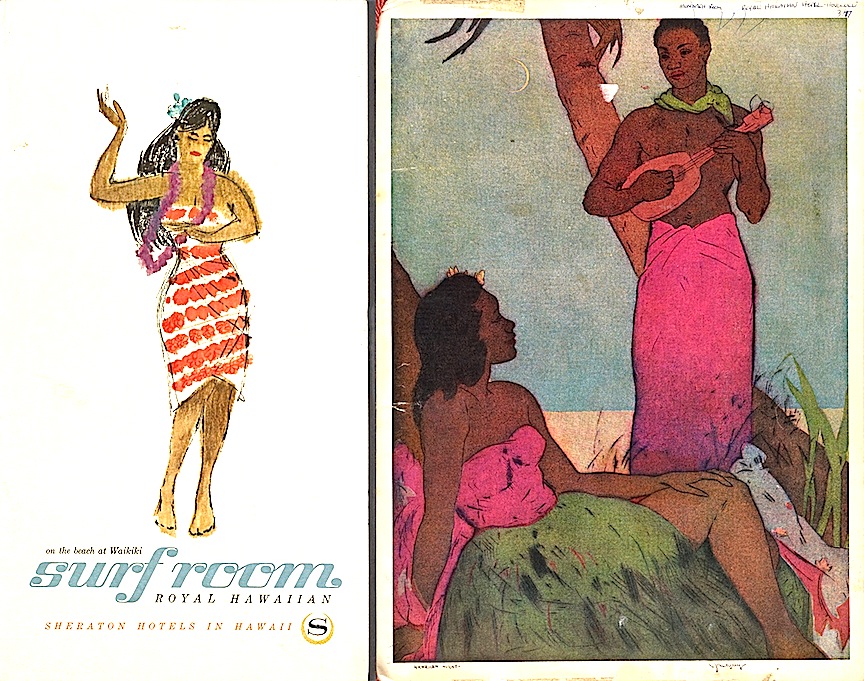
Menu
from the Surf room, Royal Hawaiian Hotel,
Honolulu, circa 1960.
❖❖❖
THIS WEEK
AEGEAN IDYLL, PART TWO
BY EDWARD BRIVIO
NEW
YORK CORNER
JUNI
BY JOHN MARIANI
NOTES
FROM THE WINE CELLAR
CAN TEXAS WINES TAKE THE HEAT?
BY JOHN MARIANI
❖❖❖
AEGEAN IDYLL,
Part Two
Photos by Robert Pirillo

The Parthenon, Athens
Our
first landfall on a
seven-day cruise of the Greek Islands and the Turkish
"Riviera" aboard the Azamara Journey
was Mykonos island, where we went on a
four-hour bus trip guided by a savvy native who was
also beautiful enough to be a model. First stop was in
the center of the island, at the village of Ano Mera,
where we visited the sleepy, bright white and
bougainvillea-draped monastery of Panagia Tourliani (below), dedicated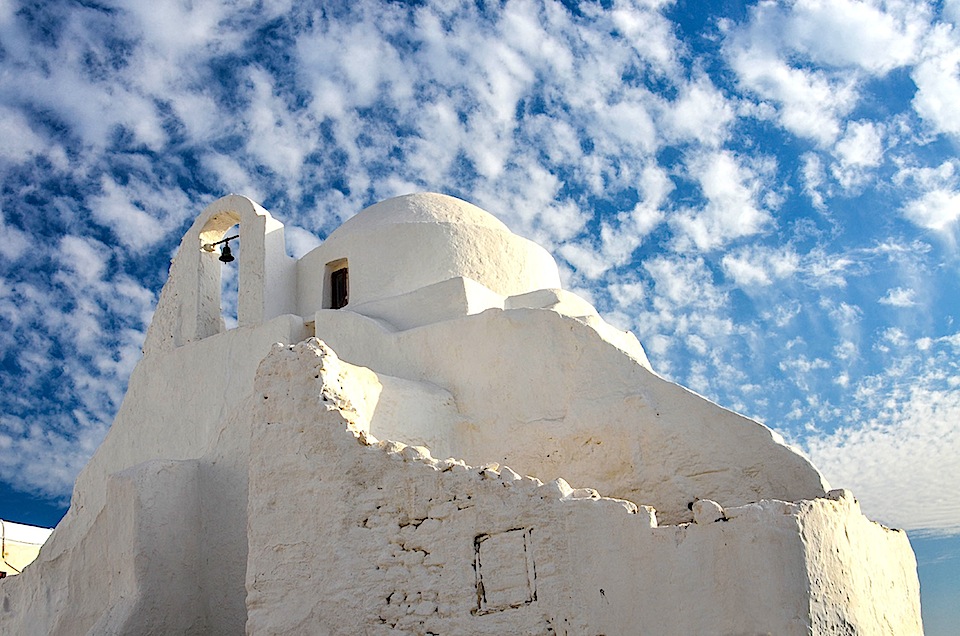 to the Virgin Mary and
erected in the 16th century. Opulent chandeliers and
pierced hanging lamps filled the exquisite, jewel-box
interior of its church, with a fresco of Christ
Pantocrator painted on the small central dome. The
glorious polychrome altar screen, almost
churrigueresque in its flamboyance, was emblazoned
with large icons. The central one, of the Virgin and
Child, the paint of their faces barely recognizable on
its smoke-blackened, driftwood panel, washed up from
the sea and is considered miraculous.
to the Virgin Mary and
erected in the 16th century. Opulent chandeliers and
pierced hanging lamps filled the exquisite, jewel-box
interior of its church, with a fresco of Christ
Pantocrator painted on the small central dome. The
glorious polychrome altar screen, almost
churrigueresque in its flamboyance, was emblazoned
with large icons. The central one, of the Virgin and
Child, the paint of their faces barely recognizable on
its smoke-blackened, driftwood panel, washed up from
the sea and is considered miraculous.
A quick
stop at a beach for a refreshing swim in the clear
blue sea was next. Finally, a walk in the town of
Mykonos itself, through its quiet, winding residential
back lanes, so narrow that the second floor balconies
almost touch. Old women in black sat relaxing in front
of their cubical white houses, their doors, staircases
and shutters all painted the same vivid color, whether
blue, red 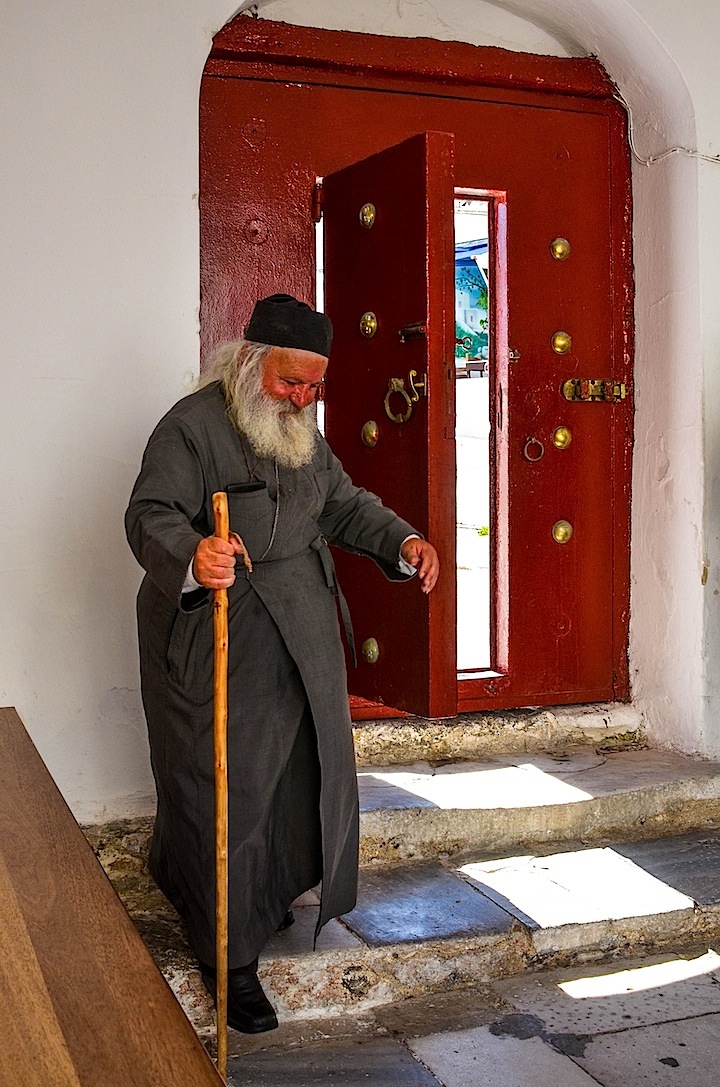 or green.
or green.
As luck
would have it, we even got to meet the waterfront's
official mascot, Petros (or Peter) the Pelican,
enjoying his siesta on top of a low wall. A quite
large, almost pure white bird, with his long beak
turned back under his wings, he brought to mind an
enormous egg. There he sat, not ruffling a feather, so
still you could mistake him for a large sculpture,
completely at ease, very poised and dignified in his
own avian way. If only the same could be said about
the noisy, gawking, camera-toting tourists, milling
around him like ill-bred school children who just
can't resist seeing how close they can get to him for
a snapshot.
Next was a
visit to picturesque "Little Venice," the oldest part
of town (below),
where there are colorful fisherman's -- or pirates' --
houses, whose walls rise up straight out of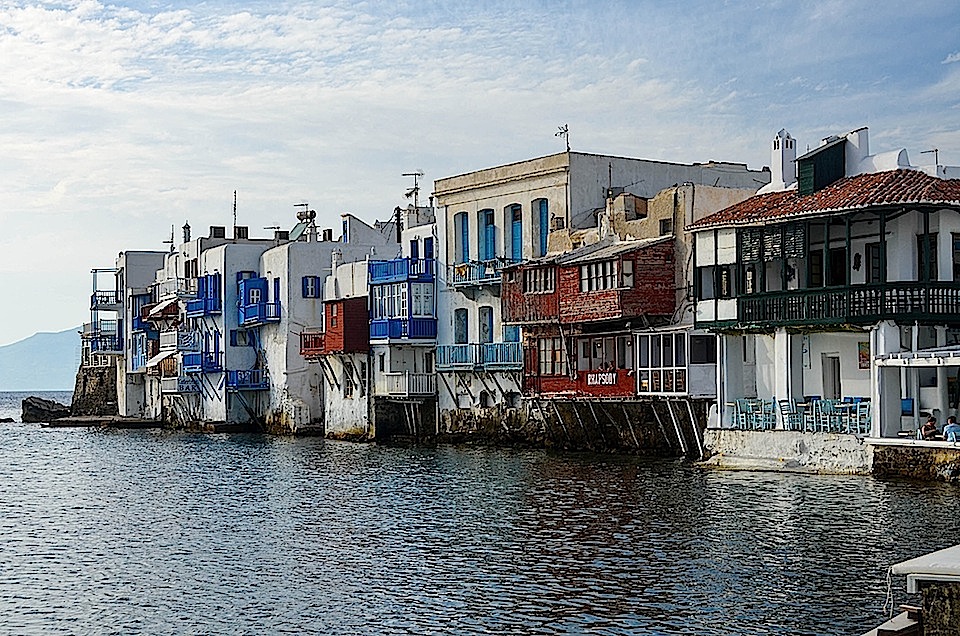 the sea and
have plain wooden balconies overhanging the water on
their upper floors.
the sea and
have plain wooden balconies overhanging the water on
their upper floors.
The next morning, we anchored in
the harbor at Kusadaşi, Turkey. The town itself is a
large open-air souk where t-shirts, table linens, and
other factory-produced souvenirs were offered side by
side with magnificent carpets and artisan-made 22
carat gold jewelry. There were numerous, narrow
alleyways, actually long flights of steps, that we
were told led up to an atmospheric, picturesquely
crumbling Old Town, but it was so hot and the stairs
far too numerous and steep for us to bother.
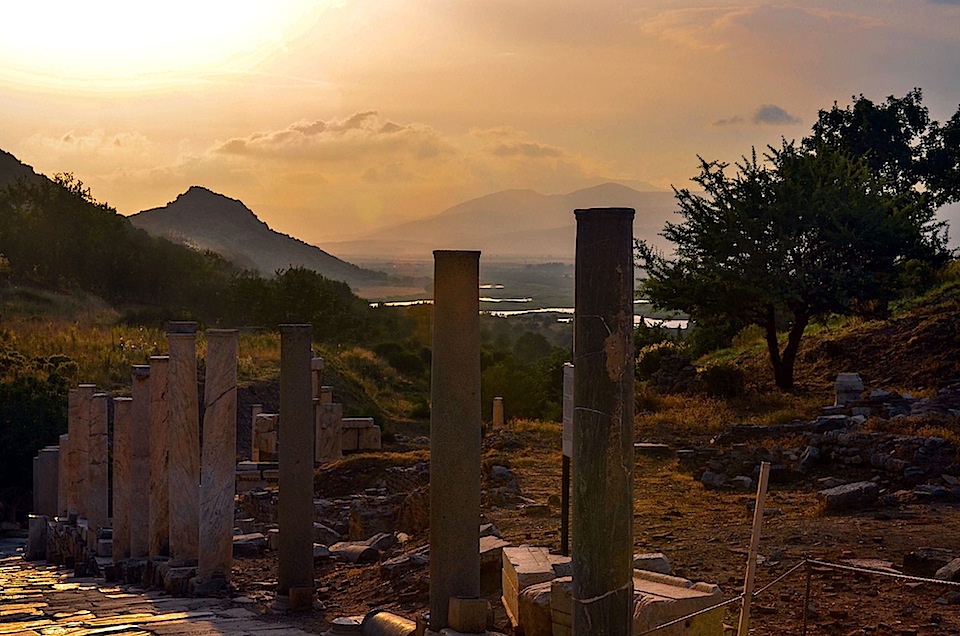 Later
we took in our complimentary Azamara Evening event
at Ephesus (left).
A fleet of buses took most of our ship’s passengers
for a two-hour ride to hear an outdoor classical
concert in the ancient theater right at the entrance
to the extensive Roman ruins at Ephesus. After
getting over the initially profound disappointment
at not being able to visit any other parts of the
ruins (guards were there to stop us), we enjoyed an
evening of popular classical selections: Bach's “Air
on the G string,” Mozart's “Eine Kleine Nachtmusik,”
Borodin's “Polovtsian Dances,” Handel's “Harp
Concerto” and more, played by a chamber orchestra of
gifted young musicians. Cushions were provided to
mitigate the hardness of the ancient stone seats. As
the evening cooled down and darkness obscured all
but the candlelit semicircle of listeners, a
crescent moon like the one on the Turkish flag rose
over the hillside to the east.
Later
we took in our complimentary Azamara Evening event
at Ephesus (left).
A fleet of buses took most of our ship’s passengers
for a two-hour ride to hear an outdoor classical
concert in the ancient theater right at the entrance
to the extensive Roman ruins at Ephesus. After
getting over the initially profound disappointment
at not being able to visit any other parts of the
ruins (guards were there to stop us), we enjoyed an
evening of popular classical selections: Bach's “Air
on the G string,” Mozart's “Eine Kleine Nachtmusik,”
Borodin's “Polovtsian Dances,” Handel's “Harp
Concerto” and more, played by a chamber orchestra of
gifted young musicians. Cushions were provided to
mitigate the hardness of the ancient stone seats. As
the evening cooled down and darkness obscured all
but the candlelit semicircle of listeners, a
crescent moon like the one on the Turkish flag rose
over the hillside to the east.
Our
next stop was the island of Kos. Unfortunately, we
didn't get to see any of Kos town, surrounded by walls
erected in the Middle Ages. Rather, we were whisked
away by bus to the massive ruins of Asclepion, built
on several marble terraces, where Hippocrates, the
“father of Western medicine," had his treatment
center. Highlights were the remains of the 3rd Century
Temple of Apollo and its baths.
Then, off to a
village, Zia, way up the forested slope of Mount
Dikeos, with traditional stone houses and a main
street lined with shops selling souvenirs, as well
as local honey and sponges. Its many rooftop
restaurants had beautiful views of the mountains and
the sea. Where our guide took us the standard Greek
menu was offered, including superb mezes
and main courses from the grill,
along with great pilsner-style national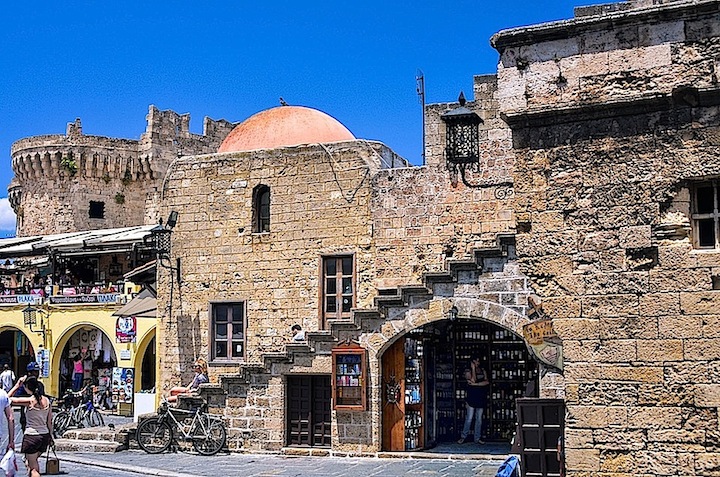 beers, Alpha and Mythos, all very reasonably priced.
beers, Alpha and Mythos, all very reasonably priced.
At noon
the next day, we docked at Rhodes. No tour was
planned, so we just strolled around the beautiful
walled Old Town (right) and its sun-baked main drag,
Socratous Street, filled with shops, restaurants, and
sightseers. The back streets, however, where daily
life continued away from the tourist crush, were
lovely, cool and shady under the enormous green
canopies of wide-trunk trees, a single canopy often
large enough to cover an entire square.
We had a
wonderful lunch at the popular, aptly named Socratous
Garden, a few steps and the swing of a gate off
of sultry Socratous Street, but a world away.
Delicious mezes: tzatziki,
taramosalata and a small Greek salad, followed
by small portions of half a dozen mainstays of Greek
cuisine, moussaka,
pastitsio (lasagna), keftidie
(meatballs, sausages, broiled stuffed-tomato), dolmades
(stuffed grape leaves) and some beef and onion
fricassee that we couldn't stop eating, all in one
order big enough for the two of us. (Lunch for two,
with shared entree, 32 Euros, or $44.) The roomy patio
could tempt you to idle away the whole afternoon in
the cool, leafy shade of its trees.
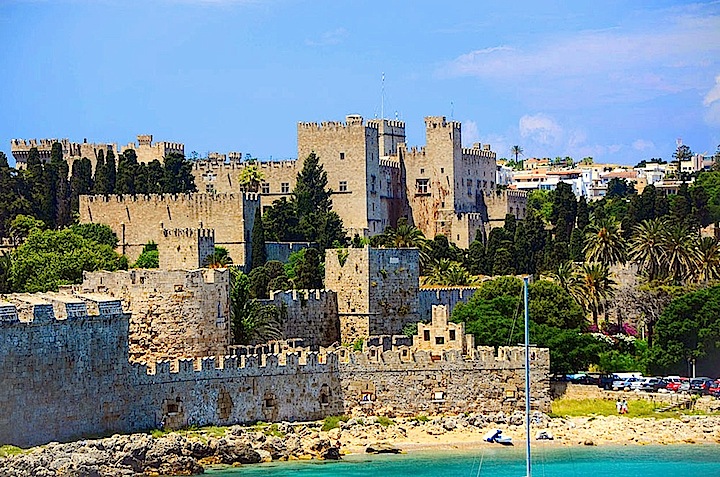 But
don't miss the Palace of the Grand Masters (left),
a citadel of the medieval Knights Hospitaller, with
its outstanding collection of about two dozen
superb, completely intact Late Roman and Early
Christian mosaic stone pavements, some brilliantly
geometric, some touchingly figurative. All were
removed from Kos by the Italians during their 1912
occupation of the Dodecanese Islands. Another
must-see is the Street of the Knights, lined with
the Inns of the Tongues, where the knights from
different countries were segregated in their own
national establishments. Its narrow, cobbled streets
and arched bridges between substantial stone houses
date from the 14th century, one of the most
extensive and best preserved examples of Gothic city
building in the world. Oh, but what a torment to
walk on those tiny stone cobbles, even with rubber
soles. How do the women of Rhodes manage it in
today's high heels?
But
don't miss the Palace of the Grand Masters (left),
a citadel of the medieval Knights Hospitaller, with
its outstanding collection of about two dozen
superb, completely intact Late Roman and Early
Christian mosaic stone pavements, some brilliantly
geometric, some touchingly figurative. All were
removed from Kos by the Italians during their 1912
occupation of the Dodecanese Islands. Another
must-see is the Street of the Knights, lined with
the Inns of the Tongues, where the knights from
different countries were segregated in their own
national establishments. Its narrow, cobbled streets
and arched bridges between substantial stone houses
date from the 14th century, one of the most
extensive and best preserved examples of Gothic city
building in the world. Oh, but what a torment to
walk on those tiny stone cobbles, even with rubber
soles. How do the women of Rhodes manage it in
today's high heels? 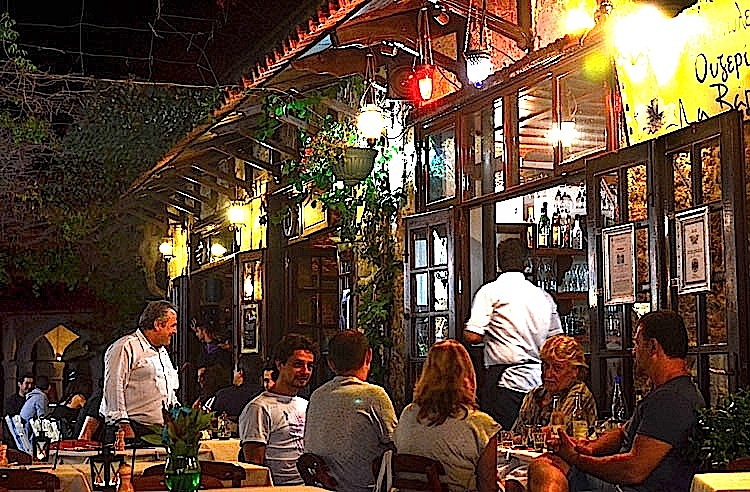
At night, we
had dinner at La Barka (below)
with tables right out on Sophokleous Street in the
Old Town. The usual great mezes
was followed by simply grilled sea bass that we
drizzled with lemon juice. The chef came out and
presented us with a platter of whole fish, so
glistening and fresh I expected them to jump off the
plate. "This is sea bream,” he pointed out, “this is
sea bass; the bass is better." It certainly was
good. Our waiter
and waitress were delightful, as was the red table
wine. The taverna had changed ownership the day
before, so everyone was new and enthusiastic but still
wholly competent. Dinner for two with wine was about
72 Euros, or $94.
Marmaris,
Turkey, is a harbor town with a large, open-air
bazaar offering the usual trash and treasures for
sale. Energetic, but not aggressive, street vendors
were hawking their wares out front of every shop.
When looking at jewelry, or carpets, we were always
offered something to drink, according to rules of
Turkish hospitality, but prices, as usual, were much
too high.
Here,
a six-hour bus tour took us to the small town of
Dalyan, on the edge of one of the world's most
important wetland areas. A boat then took us down the
Dalyan River and through the reed-lined channels of
its delta, past the spectacular weathered facades of
Lycian rock tombs (below) ca. 400 BC,
sculpted halfway up the sheer hillsides and mimicking
the 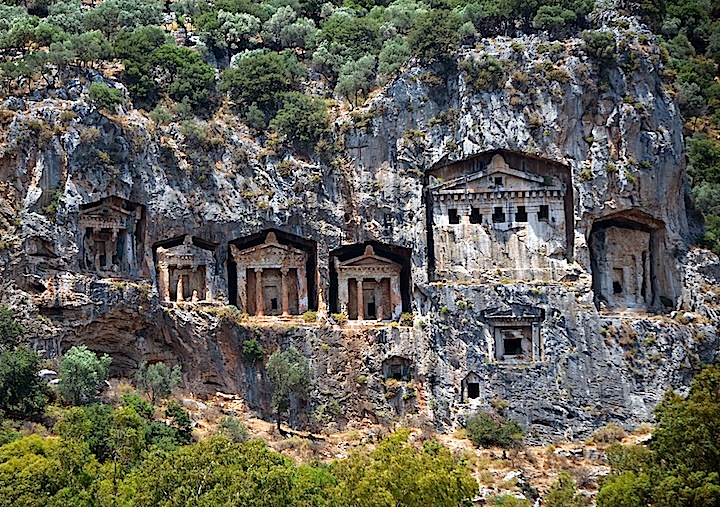 porticoes of
small Ionic temples. Then on to the still impressive
Roman ruins of the trading city of Caunos, where the
remains of temples, baths and even a theater from the
2nd Century BC can be visited. Here our guide
explained its mythical founding, and the silting up of
its harbor responsible for the city's decline in
antiquity.
porticoes of
small Ionic temples. Then on to the still impressive
Roman ruins of the trading city of Caunos, where the
remains of temples, baths and even a theater from the
2nd Century BC can be visited. Here our guide
explained its mythical founding, and the silting up of
its harbor responsible for the city's decline in
antiquity.
Then back
to the boat for a short ride to the long, sandy beach
of Iztuzu, filled, but not crowded, with Russian
tourists, and famous for its protected turtle breeding
grounds. Wire pyramids on the beach indicate the
turtle nesting sights, and the beach is closed at
night during the period that the loggerhead sea
turtles lay their eggs. The tour concluded with lunch
-- great mezes,
passable main courses, nice cold Alpha beer -- in one
of the outdoor tavernas in Dalyan.
We caught the Azamara Journey
at Piraeus after spending two enjoyable days in Athens
in comfortable and reasonable (95 Euros, $126 a night)
accommodations at the Melia
Athens (below)
a very new, well-maintained hotel. Our large
room had a queen-size bed, plenty of closet space and
a marble bathroom, big enough for a bathtub with
hydromassage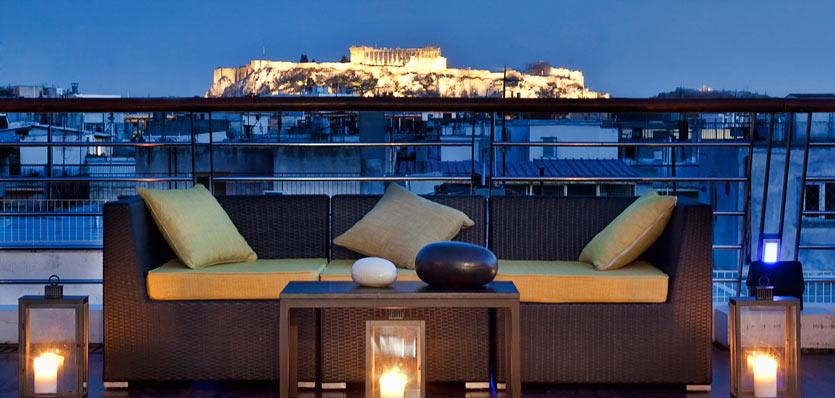 shower.
shower.
The surrounding
neighborhood was quite run-down, with empty high-rises
above graffiti-covered storefronts. Run-down but not
dangerous or in the least unsettling. From the Melia,
it was an easy walk to Syntagma Square and Plaka, or
Old Town, which is not run-down at all and as lively
and as much fun as ever. We ate very well, both at Spilia
on Thrassilou Street halfway up the hill to
the Acropolis, with a view of its Eastern terrace
(dinner for two with wine, 42 Euros, $56), and at Daphne's (below) on
Lyssikratous Street, back down on
street level, with more refined versions of
taverna cuisine in an equally more refined space, with
cloth tablecloths and napkins, served outside in the
courtyard (dinner with cocktails and wine, 64
Euros, $83).
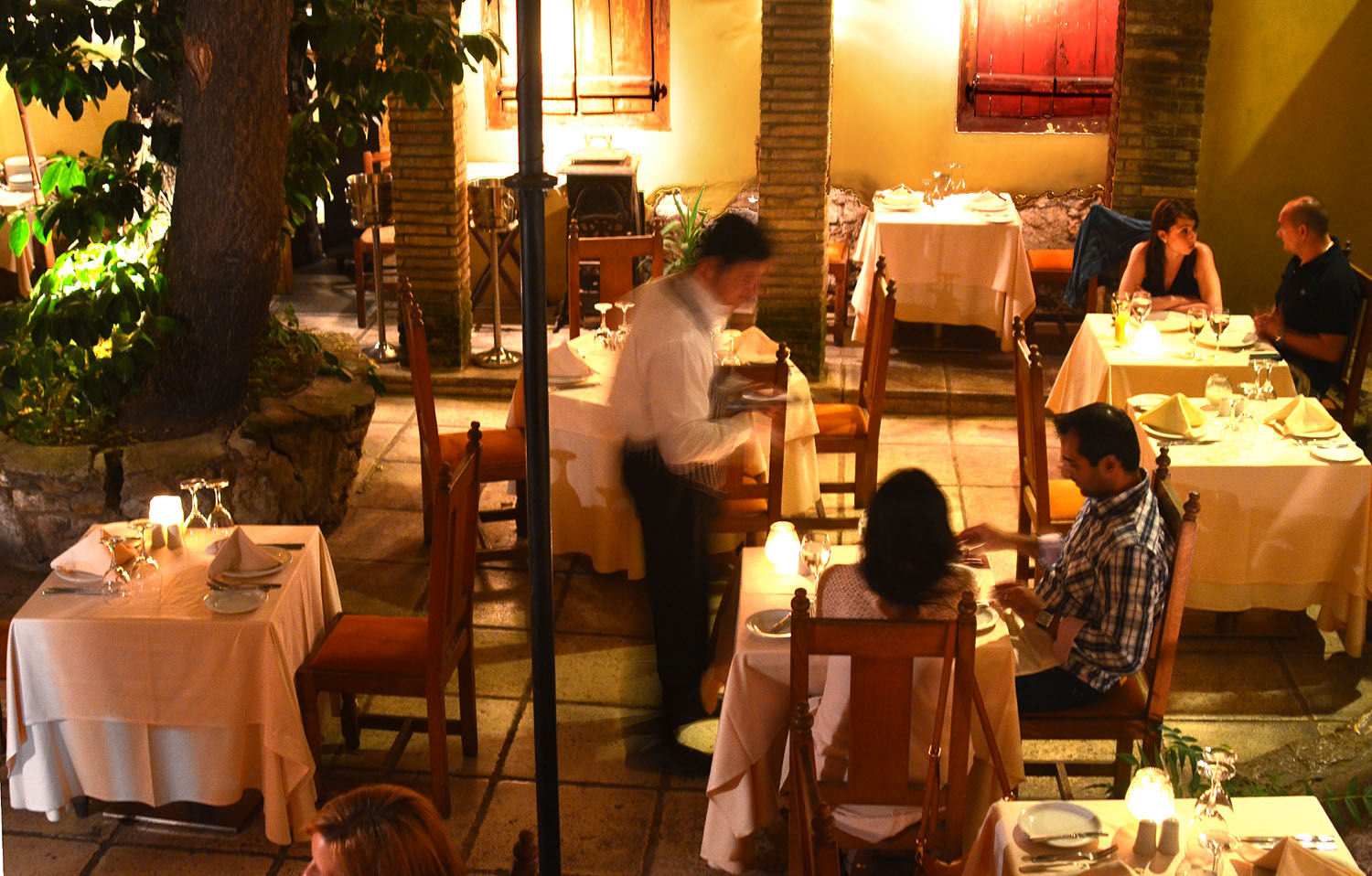 What a pleasure
to wander aimlessly around the Plaka (below), where
streets filled with outdoor tavernas soon give way to
narrow, sloping lanes dressed up with potted plants.
The streets climb steeply up the hill below the
Acropolis. Here in cozy white houses draped with
masses of color-saturated bougainvillea, daily life
goes on undisturbed. We almost found ourselves guests
at a christening.
What a pleasure
to wander aimlessly around the Plaka (below), where
streets filled with outdoor tavernas soon give way to
narrow, sloping lanes dressed up with potted plants.
The streets climb steeply up the hill below the
Acropolis. Here in cozy white houses draped with
masses of color-saturated bougainvillea, daily life
goes on undisturbed. We almost found ourselves guests
at a christening.
We made the hot,
sun-baked climb up the hill to the magnificent
Parthenon and the Erechtheion, with its equally
splendid Caryatids (below,
left), even if these last
are replicas. (For the real Caryatids, visit the
Archaeological Museum near the foot of the Acropolis.)
Delicious, ice-cold orange slushies helped take the
edge off the sweltering walk down.
if these last
are replicas. (For the real Caryatids, visit the
Archaeological Museum near the foot of the Acropolis.)
Delicious, ice-cold orange slushies helped take the
edge off the sweltering walk down.
Among other
reasons to stay at the Melia is its rooftop pool and
cafe on the 18th floor. So nice for lunch, or a dip
and cool drink after a hot, gritty day of walking,
mostly uphill, and just about perfect late at night,
after the pool has closed, for a well-made cocktail
(the bartender made perfect mojitos ) while lounging
on one of its comfortable sofas with a picture
postcard view of the illuminated Parthenon in all its
incomparable glory.
Finally,
a note on shopping in the region: in the Old Town of
Rhodes, hidden among the chachka shops on Socratous
Street, at the corner of Aristotelous Street, was a
tiny, shoebox of a shop, Kalimera Art Gallery, very
narrow and deep, with a very well-dressed, attractive
proprietor standing at the back. Filled with such a
treasure trove of remarkable, luxurious,
hand-embroidered silk fabrics, the already 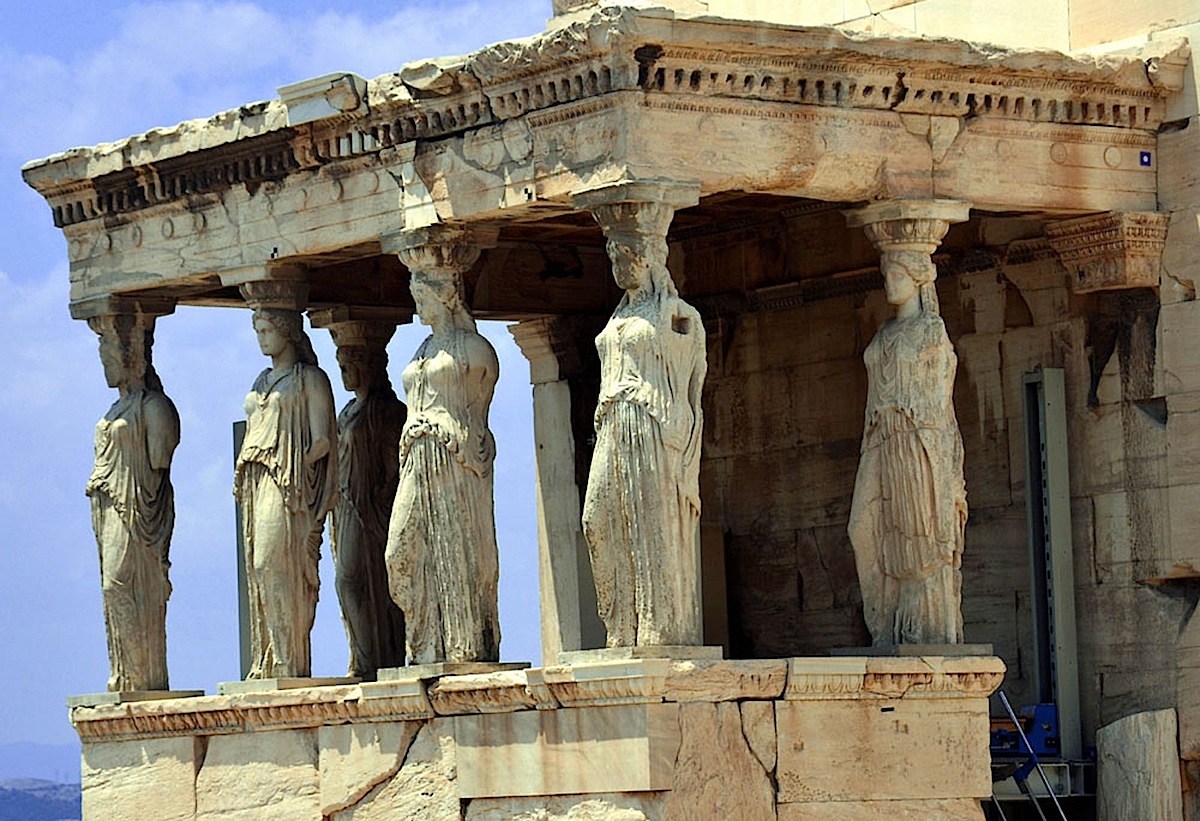 tight space could scarcely
be entered single-file. No cheap junk anywhere. When
we noticed the icons hanging on the wall, the
proprietor said, "Lovely, aren't they? Not old, but
all hand-painted." Telling us right off the bat that
they weren't antiques, or really not old at all, was
just what I'd been waiting to hear. Guide books all
stress that the icons for sale to tourists are all
usually mass-produced in factories.
tight space could scarcely
be entered single-file. No cheap junk anywhere. When
we noticed the icons hanging on the wall, the
proprietor said, "Lovely, aren't they? Not old, but
all hand-painted." Telling us right off the bat that
they weren't antiques, or really not old at all, was
just what I'd been waiting to hear. Guide books all
stress that the icons for sale to tourists are all
usually mass-produced in factories.
The
genuine antiques are all in churches or museums, or
very high-end antique shops. These, however, were new,
original works of art. And so, after looking in the
afternoon, then some gentle bargaining in the evening
-- and after being introduced to
the proprietor's husband and son -- we left
with an icon, not only beautiful in itself, but the
perfect souvenir of our wanderings.
To read Part One of this
article, click here.
❖❖❖
by John Mariani
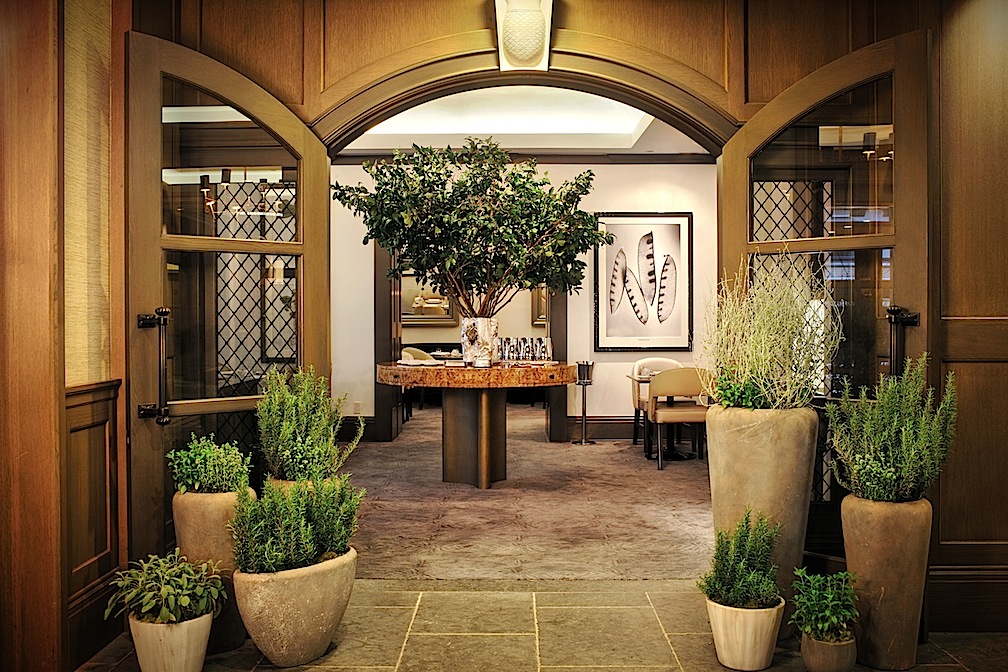 Juni
Juni12 East 31st Street
212-995-8599
www.juninyc.com
Juni
made
a late summer debut, but while I usually like to
wait a few weeks to visit a restaurant, my
admiration for Australian chef Shaun Hergatt caused
me to rush right over to West 31st Street to see
what he was doing since leaving his namesake
restaurant at the Setai Hotel way downtown.
That restaurant, called Sho Shaun Hergatt,
made my list of Esquire’s
Best New Restaurants of 2009, a big, glittering
space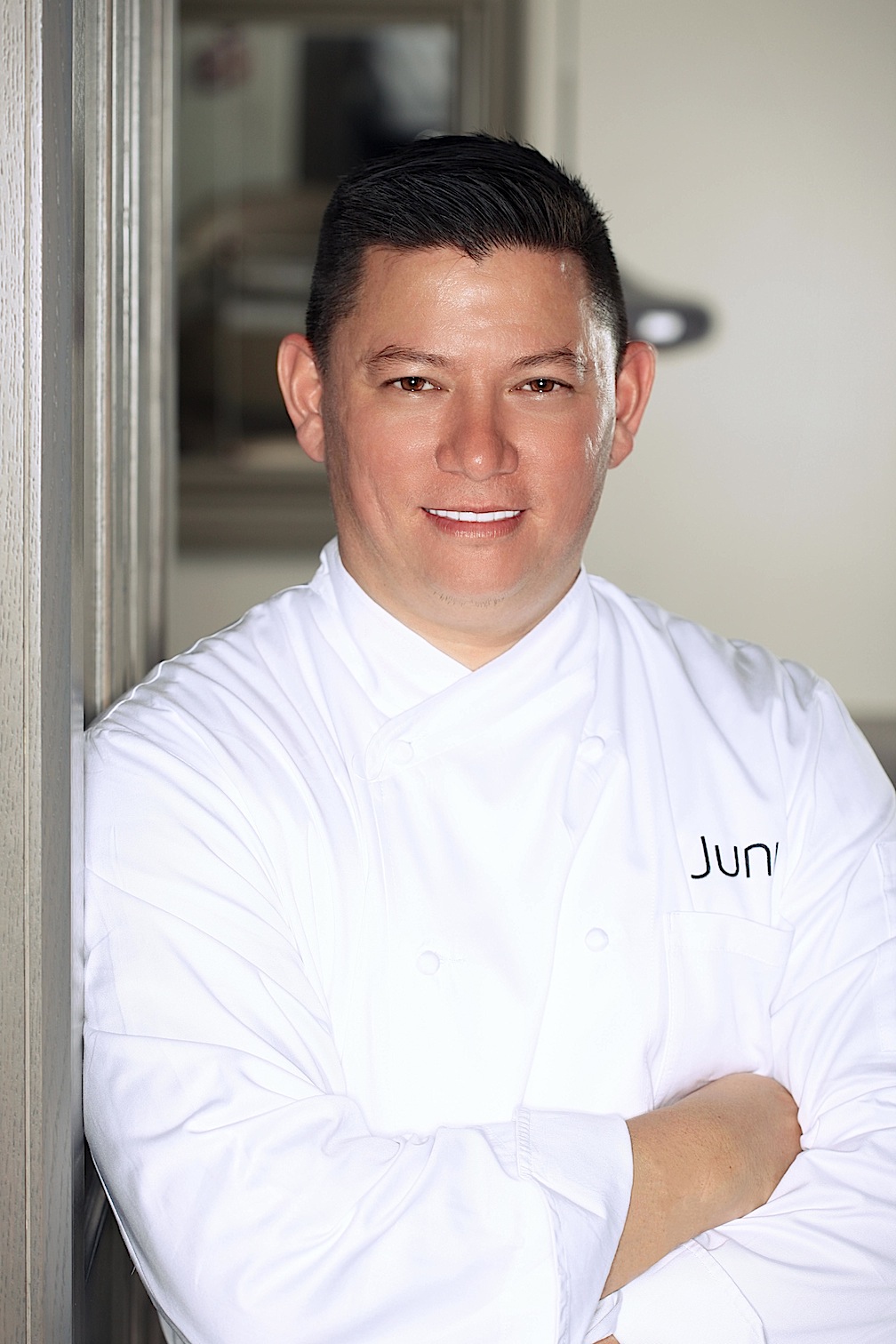 (soon to be a kosher
steakhouse) where he was showing off what he could
do, earning a Michelin star along the way.
(soon to be a kosher
steakhouse) where he was showing off what he could
do, earning a Michelin star along the way.
Now, with
just 50 seats at his disposal, Hergatt, with
ESquared Hospitality group (which runs the BLT
Steakhouses), has streamlined his menu and his
cuisine, now even more impressive than what he’d
done in the past. By focusing in on ingredients’
essential flavors, without mutating them into
something unrecognizable, he shows why the gimmickry
of molecular cuisine is just so much misdirection.
His
career has risen smoothly, from being appointed at the age of 23
as chef de cuisine at The Ritz-Carlton in Sydney,
which earned him an Australian Hotels Association
“Best Young Chef” award in 2000. That year he
moved to the U.S. to become chef de cuisine at the
Ritz-Carlton in NYC, then heading to the Setai in
the Financial District nine years later.
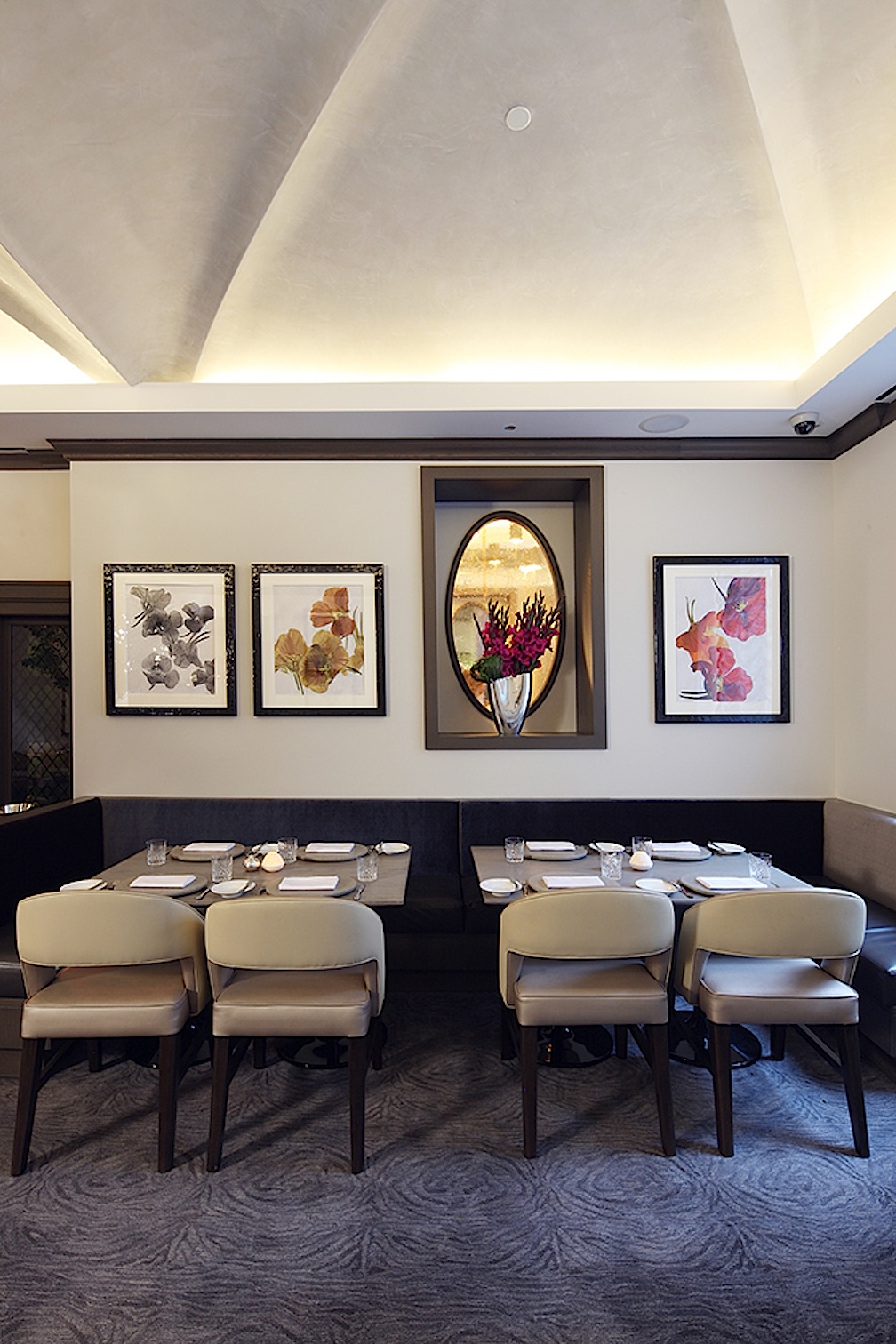 Juni,
adjacent to the Chandler Hotel, is composed of three
congenial rooms (they may add a fourth this winter),
and the name, Hergatt told me, derives from the
Latin word Junius,
for the month of June. The seasons are crucial to
all chefs, but Hergatt is insistent he will never be
cooking out of season, a stance that is quite
evident as soon as you taste the first sip of his
“warm pork soup,” whose reduction of kale and
spinach has an intensity that is almost heady; in
that soup are shreds of smoky pork and atop it is a
lovely egg yolk just waiting to be broken up into an
oozing mass of golden yellow. The excellence of the
seasonal vegetables are what makes the dish sing;
without that, the dish might merely hum.
Juni,
adjacent to the Chandler Hotel, is composed of three
congenial rooms (they may add a fourth this winter),
and the name, Hergatt told me, derives from the
Latin word Junius,
for the month of June. The seasons are crucial to
all chefs, but Hergatt is insistent he will never be
cooking out of season, a stance that is quite
evident as soon as you taste the first sip of his
“warm pork soup,” whose reduction of kale and
spinach has an intensity that is almost heady; in
that soup are shreds of smoky pork and atop it is a
lovely egg yolk just waiting to be broken up into an
oozing mass of golden yellow. The excellence of the
seasonal vegetables are what makes the dish sing;
without that, the dish might merely hum.
He purees
creamy burrata
cheese and serves it simply, with sweet cherry
tomatoes and a tomato gelée. The skin of a
roasted branzino is as crisp as parchment, served
with three-colored carrots and a kiss of lemon
essence, while his grilled hanger tenderloin comes
with truffled pommes
purée and delicate lamb’s quarter
leaves. For anyone going non-carnivore at
Juni, the salad of golden corn, steel cut oats and
lovage oil has amazing flavor and wondrous textures.
Pastry
chef
Mina Pizarro matches Hergatt’s devotion to simple
flavors with desserts 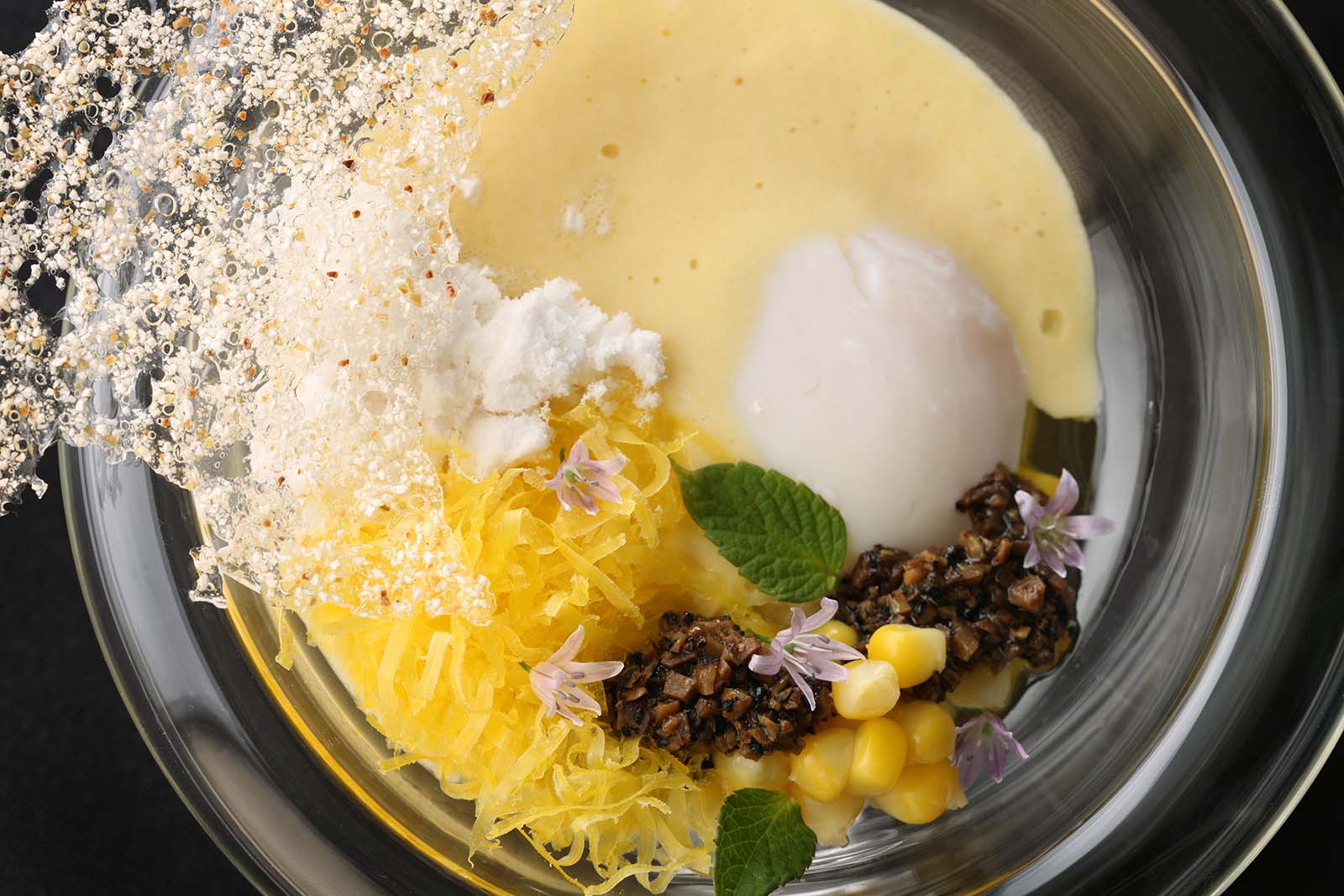 like peaches
and cream with cucumber and basil, and a witty take
on caramel corn, scented with tarragon, lime and
surprisingly good Cheddar cheese. Sommelier Jason
Galang has gathered an impressive screed of wines
that match up with Hergatt’s cooking, not least a
good selection of international pinot noirs.
like peaches
and cream with cucumber and basil, and a witty take
on caramel corn, scented with tarragon, lime and
surprisingly good Cheddar cheese. Sommelier Jason
Galang has gathered an impressive screed of wines
that match up with Hergatt’s cooking, not least a
good selection of international pinot noirs.
The
dining rooms are sedate but pretty, done in sandy
colors under arched ceilings that give the space an
airiness and intimacy at the same time. Harvest
photos by artist Carol Dunn echo the theme of the
food. This is a civilized restaurant, no high noise
level, no crashing music, no hipster waiters in
black t-shirts. Juni is proof that fine dining has
not faded at all in NYC, an idea that restaurateurs
around the country should take note of.
Juni is open for lunch Mon.-Fri., for dinner Mon.-Sat.; Lunch $30-$35, dinner four courses for $90, six for $120, and ten for $180, with a la carte appetizers $20, main courses $40.
❖❖❖
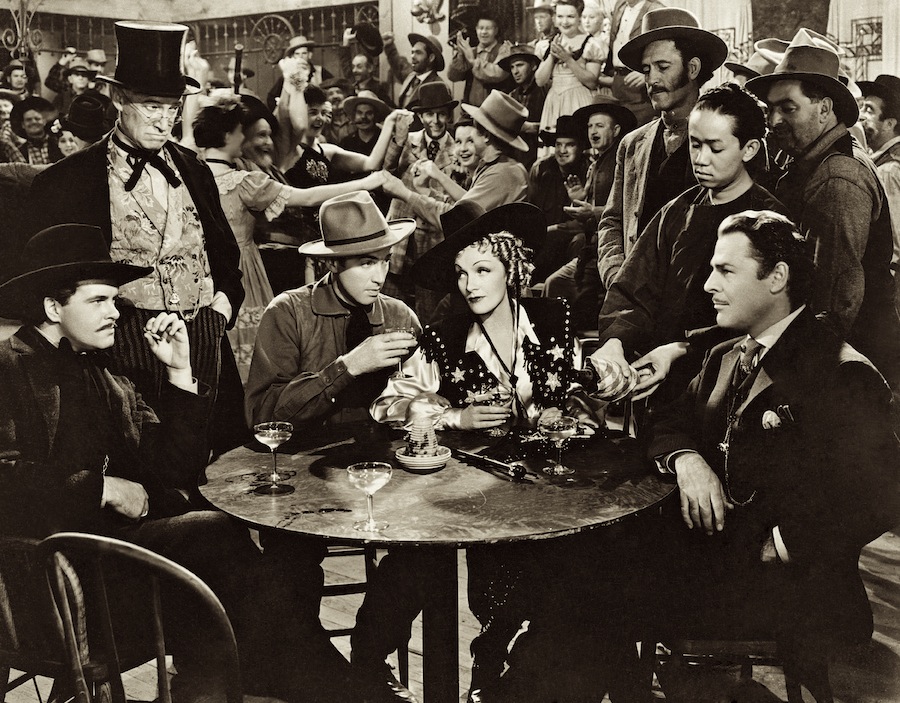 CAN TEXAS WINES
CAN TEXAS WINES
TAKE THE
HEAT?
by John Mariani
Being the fifth largest wine
grape and wine producing state in the U.S. might be
worth boasting about, but Texas is not a state that
takes fifth place lightly. With 275 bonded wineries
producing 3 billion gallons annually, with $1.8
billion in sales, Texas’s wine industry is still
expanding. But both climate and sales marketing has
made it a struggle to compete with California,
Oregon, and other states for bragging rights.
“Our state’s top vignerons are among the
bravest, most intrepid and most tortured farmers on
the planet,” Houston
Chronicle wine columnist Dale Robertson
wrote last month. “Late freezes, hailstorms and
drought wreak constant havoc.” In fact, a spring
freeze in 2013 killed off most of the grapes in the
High Plains appellation vineyards, leaving some
growers with no grapes at all.
Ironically, while drought is a disaster for
most crops, wine grapes make the best wines if they
are stressed for lack of water, and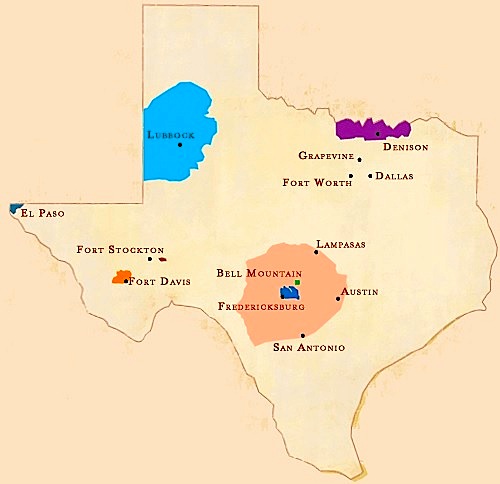 Texas growers have shied
away from Bordeaux varietals in favor of more hot
weather grapes like tempranillo and shiraz. But
better grapes mean fewer grapes, so many wineries
are forced to source grapes from California to fill
their bottles.
Texas growers have shied
away from Bordeaux varietals in favor of more hot
weather grapes like tempranillo and shiraz. But
better grapes mean fewer grapes, so many wineries
are forced to source grapes from California to fill
their bottles.
By federal law, if a wine has 75 percent or
more of its contents from out-of-state grapes, it
must be labeled “For Sale in Texas Only,” with no
further designation. So, wines with 74 percent
California juice may be labeled Texas wines. (The
state of Texas has no such laws of its own.)
“Quality has increased
significantly but not the number of wineries making
that quality,” said Jessica Dupuy, Austin-based wine
writer for Texas
Monthly Magazine. “The best, like McPherson
Cellars, Duchman Family Winery and Pedernales
Cellars are strictly focusing on Texas fruit. But there
isn’t enough acreage available for them to produce
as wine fruit as they could sell.”
Most of the wines are sold on winery
premises, and better restaurants can’t get the best
wines to put on their wine lists and those are very
expensive, so that a restaurant mark-up make the
wines prohibitive to most guests, who can buy
excellent Spanish, Rhone or Italian wines for less.
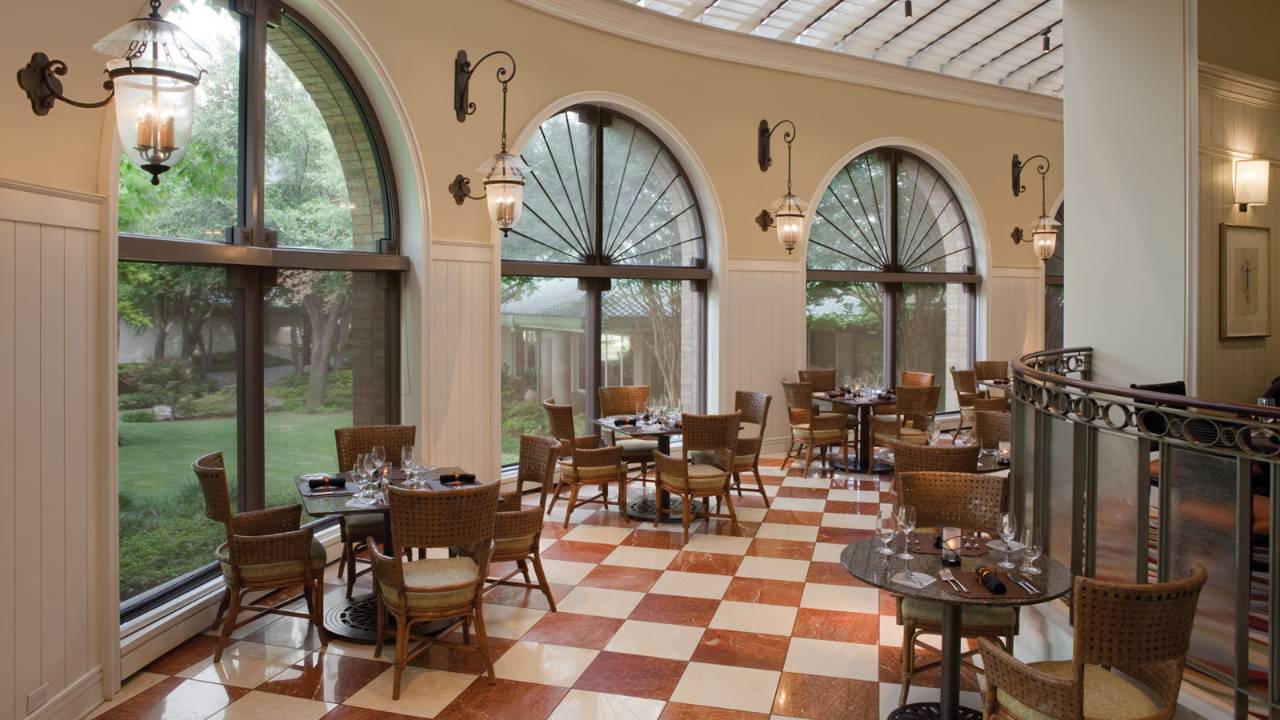 Over a week spent
in Austin, Dallas and Houston, I sought to drink
Texas wines exclusively but found only a handful on
restaurant lists. Only the Four Seasons Hotel chain,
with branches in those three cities, has made a real
commitment to carrying Texas wines. The chain’s
resort restaurant, Trio, in Irving, TX, (left) features
12 on a separate page of the wine list. According to
resort’s sommelier, James Tidwell, “The problem is
distribution. I ask to put a wine on our list and
I’m told they sold out everything at the winery.”
Over a week spent
in Austin, Dallas and Houston, I sought to drink
Texas wines exclusively but found only a handful on
restaurant lists. Only the Four Seasons Hotel chain,
with branches in those three cities, has made a real
commitment to carrying Texas wines. The chain’s
resort restaurant, Trio, in Irving, TX, (left) features
12 on a separate page of the wine list. According to
resort’s sommelier, James Tidwell, “The problem is
distribution. I ask to put a wine on our list and
I’m told they sold out everything at the winery.”
Other wine directors at other top restaurants
I visited told me that there really wasn’t enough
interest among guests to bother stocking Texas
bottlings.
Still,
I
tasted as many as I could, as recommended by the
restaurant sommeliers and found many to be very fine
wines indeed. Given the amount of sun and heat the
grapes receive, some wines’ alcohol levels were very
high.
At the new restaurant Stampede 66 in Dallas,
I very much enjoyed a 2008 Llano Estacado “1836”
Blend. The winery began in Lubbock in 1976 and is
now the largest selling premium winery in the state.
(The 1836 on the label refers to The Battle of San
Jacinto when Sam Houston beat the Mexican Army in a
30-minute battle.) A complex blend of cabernet
sauvignon, syrah, petite verdot, sangiovese and
malbec, sourced from Mont Sec vineyard in the
Chihuahuan Desert, it is a big, bold wine of a kind
you'd expect from a Texas vineyard, full of sunny
fruit and loosening tannins.
At Fearing’s restaurant in the Dallas
Ritz-Carlton Hotel, I was delighted by a 2011 Becker
Vineyards Moscato, a varietal 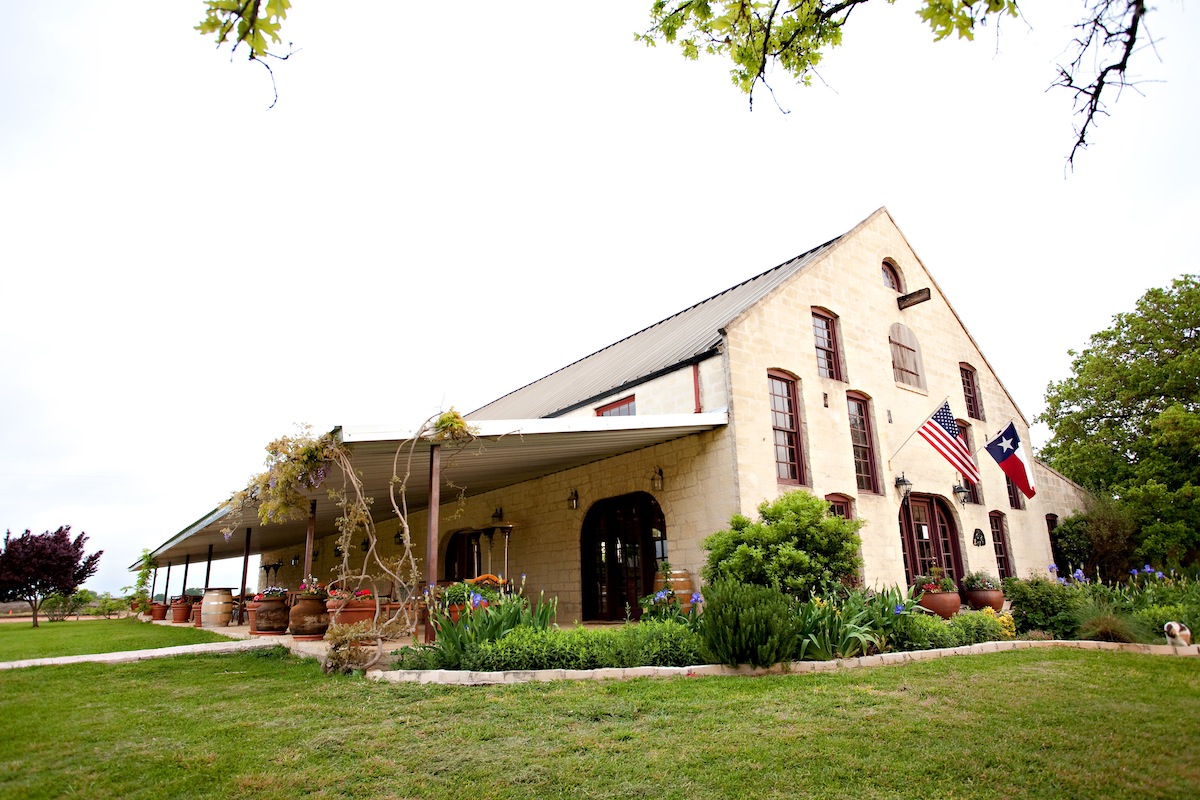 often made
in a sweet style but here pleasingly dry with the
characteristic floral aromatics of the Muscat
Canelli grape.
often made
in a sweet style but here pleasingly dry with the
characteristic floral aromatics of the Muscat
Canelli grape.
I
also tasted a 2010 Inwood Estates Vineyards
Tempranillo-Cabernet, at 14.5 percent alcohol. The wine
showed that the tempranillo has a good future in
Texas all on its own, but even though the wine was
only three years old, I sensed a bit of oxidation.
I’d drink this now but not a year from now.
The wine I liked most that week was a 2010
Duchman Family Vineyards Vermentino, a late-ripening
varietal most associated with Italy’s Liguria and
Sardinia. It was a clean, well-made wine—no hint of
oxidation here—tangy with acid, a faint sweet
undertone and far better than a lot of mass-produced
Italian vermentinos I’ve tried.
The same winery’s 2010 Sangiovese, with an
admirably balanced 13.5 percent alcohol, was not
complex but deliciously fruity, suggesting a terroir
well adapted to the Texas climate, in this case
Driftwood in the Texas High Plains. Becker
Vineyards; Skeens
Photography
I hesitate to give prices on these wines
because they are largely sold only at the wineries
themselves. But Texas has its own wine tourism, so
you can taste at wineries set in some of the
prettiest countryside north of the Rio Grande.
❖❖❖
JUST TAKES LIKE CRAP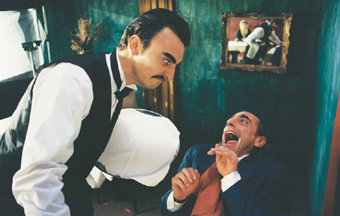
Chef Grant
Achatz of Alinea
in Chicago said in an interview with podcast "Food Is
the New Rock," "I feel — and I think a lot of my team
feels — that the thing that to me defines art is
emotion. . . . We've actually done courses that
we knew that people were going to be intimidated by. And people will shove that food away. They
will refuse it. They won't eat it. But if I serve
them that same bite of food, the exact same bite, on
a fork or a spoon, they would proclaim it delicious.
For me, that means that we're charging emotional
triggers within people. And for me that means that
it could be art."
 . . . THEN
SENT BACK TO
. . . THEN
SENT BACK TO
COOK AT ALINEA
At Dim Sum King in Seattle, a 52-year-old
woman burst into the restaurant and began yelling
ethnic slurs, including "Go Back to China!" . knocked
over plates, and poured chocolate milk and
soy sauce over a father and his infant son. The woman
was arrested. . .
Any of John Mariani's
books below may be ordered from amazon.com.
 |
My latest book, which just won the prize for best book from International Gourmand, written with Jim Heimann and Steven Heller, Menu Design in America, 1850-1985 (Taschen Books), has just appeared, with nearly 1,000 beautiful, historic, hilarious, sometimes shocking menus dating back to before the Civil War and going through the Gilded Age, the Jazz Age, the Depression, the nightclub era of the 1930s and 1940s, the Space Age era, and the age when menus were a form of advertising in innovative explosions of color and modern design. The book is a chronicle of changing tastes and mores and says as much about America as about its food and drink.
“Luxuriating vicariously in the pleasures of this book. . . you can’t help but become hungry. . .for the food of course, but also for something more: the bygone days of our country’s splendidly rich and complex past. Epicureans of both good food and artful design will do well to make it their coffee table’s main course.”—Chip Kidd, Wall Street Journal.
“[The menus] reflect the amazing craftsmanship that many restaurants applied to their bills of fare, and suggest that today’s restaurateurs could learn a lot from their predecessors.”—Rebecca Marx, The Village Voice. |
"Eating Italian will never be the same after reading John Mariani's entertaining and savory gastronomical history of the cuisine of Italy and how it won over appetites worldwide. . . . This book is such a tasteful narrative that it will literally make you hungry for Italian food and arouse your appetite for gastronomical history."--Don Oldenburg, USA Today. "Italian
restaurants--some good, some glitzy--far
outnumber their French rivals. Many of
these establishments are zestfully described
in How Italian Food Conquered the World, an
entertaining and fact-filled chronicle by
food-and-wine correspondent John F.
Mariani."--Aram Bakshian Jr., Wall Street
Journal.
"Equal parts
history, sociology, gastronomy, and just
plain fun, How Italian Food Conquered the
World tells the captivating and delicious
story of the (let's face it) everybody's
favorite cuisine with clarity, verve and
more than one surprise."--Colman Andrews,
editorial director of The Daily
Meal.com. "A fantastic and fascinating
read, covering everything from the influence
of Venice's spice trade to the impact of
Italian immigrants in America and the
evolution of alta cucina. This book will
serve as a terrific resource to anyone
interested in the real story of Italian
food."--Mary Ann Esposito, host of PBS-TV's
Ciao
Italia. "John Mariani has written the
definitive history of how Italians won their
way into our hearts, minds, and
stomachs. It's a story of pleasure over
pomp and taste over technique."--Danny Meyer,
owner of NYC restaurants Union Square Cafe,
Gotham Bar & Grill, The Modern, and
Maialino.
|
 |
 |
 |
 |
 |
 |
 |
 |
 Everett Potter's Travel Report:
Everett Potter's Travel Report: 
 Eating Las Vegas
is the new on-line site for Virtual Gourmet
contributor John A. Curtas., who since 1995
has been commenting on the Las Vegas food
scene and reviewing restaurants for Nevada
Public Radio. He is also the
restaurant critic for KLAS TV, Channel 8 in
Las Vegas, and his past reviews can be
accessed at KNPR.org.
Click on the logo below to go directly to
his site.
Eating Las Vegas
is the new on-line site for Virtual Gourmet
contributor John A. Curtas., who since 1995
has been commenting on the Las Vegas food
scene and reviewing restaurants for Nevada
Public Radio. He is also the
restaurant critic for KLAS TV, Channel 8 in
Las Vegas, and his past reviews can be
accessed at KNPR.org.
Click on the logo below to go directly to
his site.

Tennis Resorts Online: A Critical Guide to the World's Best Tennis Resorts and Tennis Camps, published by ROGER COX, who has spent more than two decades writing about tennis travel, including a 17-year stretch for Tennis magazine. He has also written for Arthur Frommer's Budget Travel, New York Magazine, Travel & Leisure, Esquire, Money, USTA Magazine, Men's Journal, and The Robb Report. He has authored two books-The World's Best Tennis Vacations (Stephen Greene Press/Viking Penguin, 1990) and The Best Places to Stay in the Rockies (Houghton Mifflin, 1992 & 1994), and the Melbourne (Australia) chapter to the Wall Street Journal Business Guide to Cities of the Pacific Rim (Fodor's Travel Guides, 1991).


MARIANI'S VIRTUAL GOURMET
NEWSLETTER is published weekly. Editor/Publisher: John
Mariani.
Contributing Writers: Christopher Mariani, Robert Mariani,
John A. Curtas, Edward Brivio, Mort Hochstein,
Suzanne Wright, and Brian Freedman. Contributing
Photographers: Galina Stepanoff-Dargery,
Bobby Pirillo. Technical Advisor: Gerry McLoughlin.
© copyright John Mariani 2013
